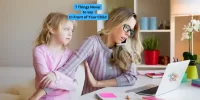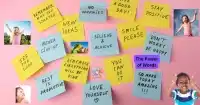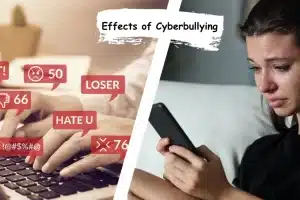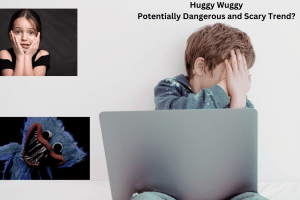by Kevin Heath
It is very important to teach your child when to call 9-1-1 and when not to. In a true emergency it could be a life saver. However, it is also very important to let your child know when not to dial 9-1-1. Some examples when not to dial 911 include:
1) If there is a power outage, or when their computer or toy is broke.
2) They should not call about the weather or if there are school closings.
3) When your child needs information that is not an emergency.
4) Directions
5) When your child gets mad at a sibling.
So, when should you teach your child to call 9-1-1? It is important to teach them what a true emergency is; when someone is seriously hurt or in danger. Examples include if there is a fire, to stop a crime, or if someone was in an accident. Other examples include if a child is locked in a car, an animal attack or bite, or a vehicle accident. If the child feels unsafe, or in danger, they should be told t call 9-1-1 and the person who answers the phone is there to help them. These are just a few of many examples, any perceived or actual emergency should be reported.
It should be emphasized to NEVER EVER call 9-1-1 for fun, for a game, or as a prank. Tell them that 9-1-1 is for true emergencies and if the operator is talking to them and it is not a real emergency, someone who is hurt and needs help might not be able to get the help that they need.
When your child does call 9-1-1 tell them to give the following information, in fact, if they are old enough to read write down the information by the phone:
- Hers or his first and last name
- Thier address, or if calling from a neighbors house the neighbors full name.
- A short description of the emergency.
It is good to practice with your child, the parent can pretend they are the operator. Be serious when your practice so as not to give them the idea it is fun and games. Practive with an unplugged phone. The parent should ask the child for their name and what the emergency is. Explain to your child to try and stay calm, and to keep the answers short. If there is a fire, tell your child to leave the house right away and let the operator know where they are going so they can be safe. Prevent most common traffic accidents by taking this NYS defensive driving course.
When you practice with your child, use an unplugged telephone. Tell them you will pretend you are the person answering. You can then ask them for their name and what is the emergency. Be sure to tell them that the answers should not be long and they should try to stay calm and not be upset. Tell them if the emergency is a house fire, they should leave the house so help can come and they will be safe.
Alex was excited to finally get his license. He was looking forward to going to the movies and to visit friends without needing someone to take him.
A couple weeks later, Alex was headed to his friend Matt’s house. Two blocks from Matt’s, Alex waited at a stop sign when he felt a sudden jolt. Someone had rear-ended his car. Alex started panicking — and his first thought was “What do I do now?”
Car Crashes
Table of Contents
Driving is probably the most dangerous thing most of us will ever do. According to the National Highway Traffic Safety Administration (NHTSA), there are more than 30,000 deaths and over 2 million injuries from an accident with a drugged driver in the U.S. every year.
Although you do your best to drive responsibly and defensively, it’s still smart to know what to do just in case you end up getting hit by a large truck. Crashes can be very scary, but here are some tips if one happens to you:
Take some deep breaths to get calm. After a crash, a person may feel a wide range of emotions — shock, guilt, fear, nervousness, or anger — all of which are normal. But take a few deep breaths or count to 10 to calm down. The calmer you are, the better prepared you will be to handle the situation. This is the time to take stock of the accident and try to make a judgment about whether it was a serious one.
Keep yourself and others safe. If you can’t get out of your car — or it’s not safe to try — keep your seatbelt fastened, turn on your hazard lights, then call 911 if possible and wait for help to arrive. If the collision seems to be minor, turn off your car and grab your emergency kit and call an accident attorney in albuquerque. If it’s safe to get out and move around your car, set up orange cones, warning triangles, or emergency flares around the crash site.
If there are no injuries and your vehicle is driveable, make a reasonable effort to move the vehicle to a safe spot that is not blocking traffic (like the shoulder of a highway or a parking lot). In some states it’s illegal to move your car from the scene of a crash, though. Ask your driver’s ed instructor what the law is in your state.
Check for Injuries and Report the Incident
Check on everyone involved in the crash to see if they have any injuries. This includes making sure you don’t have any serious injuries. Be extremely cautious — not all injuries can be seen. If you or anyone involved isn’t feeling 100% (like if you start trying to get photos or write down details on the crash and start feeling dizzy or out of it), call 911 or any other number your state uses to request emergency assistance on roadways. Be ready to give the dispatcher the following information:
- Who? The dispatcher will ask for your name and phone numbers in case the authorities need to get more information from you later.
- What? Tell the dispatcher as much as you can about the emergency — for instance, whether there is a fire, traffic hazard, medical emergency, etc.
- Where? Let the dispatcher know exactly where the emergency is taking place. Give the city, road name, road number, mile markings, direction of travel, traffic signs, and anything else you can think of to help them know how to find you.
Make sure you stay on the line until the dispatcher says it’s OK to hang up.
Sometimes, you can get the police to come to the crash scene even if there are no injuries, especially if you tell them you need someone to mediate — in other words, to help you figure out what happened and who’s at fault. But in certain areas, as long as both vehicles can be safely driven away, police officers won’t come to the scene unless someone is hurt. If the police do not come to the scene, make sure you file a vehicle incident report at a police station. And if you are the unfortunate victim of an accident as a pedestrian and you are injured, then you might want to contact a manhattan pedestrian accident lawyer for help in getting compensation for your injury.
Take Down Driver Information
Ask to see the driver’s license of the other drivers involved in the crash so that you can take down their license numbers, getting their information can help when proving fault for an auto accident. Also get their name, address, phone number, insurance company, insurance policy number, and license plate number. If the other driver doesn’t own the vehicle involved, be sure to get the owner’s info as well.













6 Comments